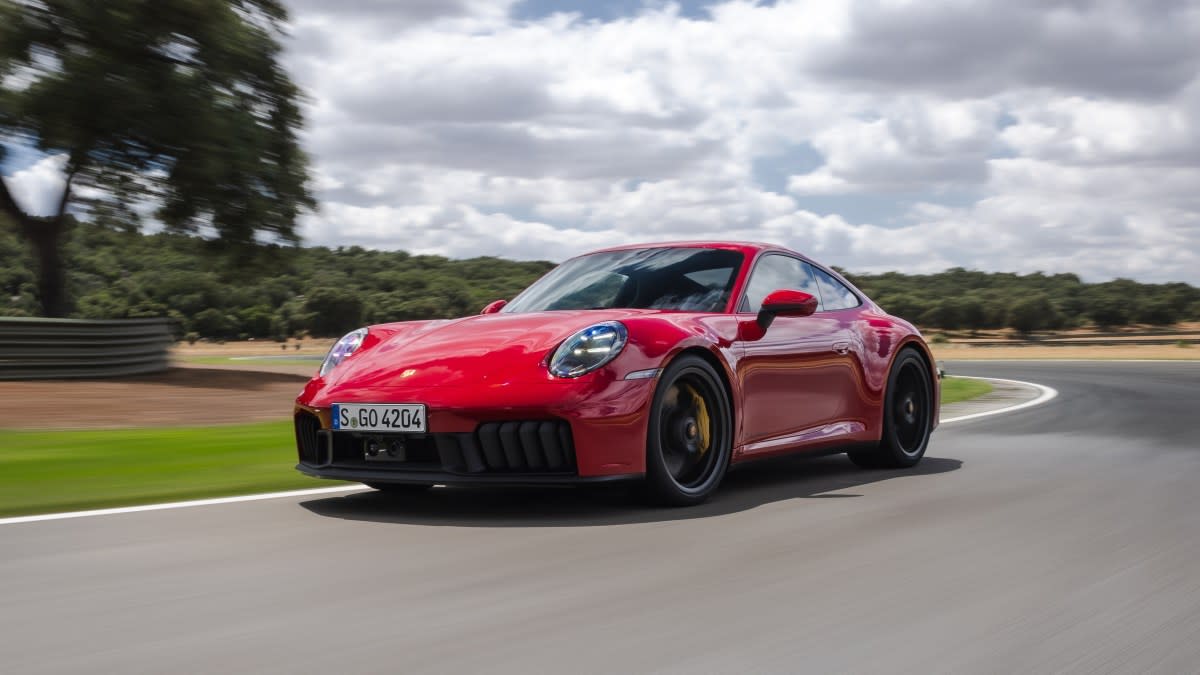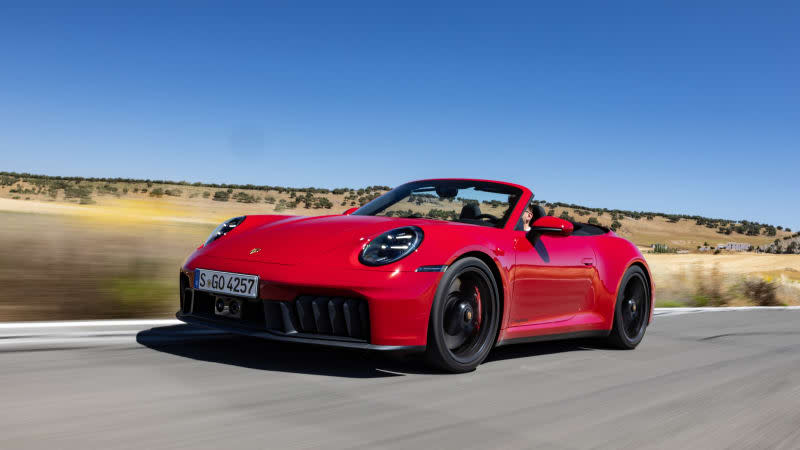2025 Porsche 911 GTS T-Hybrid First Drive: Don’t worry, it’s still the 911 we know and love
MÁLAGA, Spain -- The 2025 Porsche 911 Carrera GTS T-Hybrid doesn’t mind if you never detect it’s a hybrid. You will never accelerate with the engine unengaged. It doesn’t produce spacey electric motor sounds. The brakes are perfectly normal non-regenerative clampers to ensure there's no regenerative vagueness. Fuel economy is not the aim, nor is it meaningfully better than the outgoing non-hybrid. Curb weight is barely nudged upwards. Honestly, the best indicators of its electrified status are the “t-hybrid” decals you can have stuck to its doors. Beyond those dead giveaways, you have to put the GTS – the only model with the T-Hybrid powertrain – under a microscope of scrutiny to unearth its semi-green secrets.
This hybrid is unlike any other hybrid vehicle that Porsche, or any other carmaker, currently produces. Owners can just as easily ignore its electrified elements as they marvel at the mind-blowing tech hidden under its skin. The totally new 3.6-liter turbocharged flat-six is the righteous star of the show. Its single, massive turbo (Porsche engineers jokingly call it a truck turbo because of its size) brings back memories of the 930 Turbo, a car which just so happens to be celebrating its 50th anniversary this year. While the often-called “widow-maker” is naturally famous for its massive turbo “lag,” this new T-Hybrid is the opposite.
Instead of waiting … and waiting for boost, the GTS T-Hybrid wallops you forward with each and every prodding of the throttle, emulating a beefy, naturally aspirated flat-six with a fat torque curve. How is this possible? That single “eTurbo” is an electric-assisted exhaust gas turbocharger, with a tiny motor connected directly to the turbine shaft between the compressor and turbine wheels that instantly builds boost regardless of engine speed or load before exhaust gases reach it to keep things spinning the old-fashioned way. No wastegate is necessary since it regulates itself. The eTurbo draws power from a 1.9-kilowatt-hour lithium-ion battery pack (roughly the size of an elongated 12-volt battery, it resides in the empty space normally reserved for the optional extended-range gas tank, which loses 1.6 gallons of capacity as a result), but it also acts as a generator, producing about 15 horsepower of electrical power to both charge the battery pack or to feed a second electric motor.
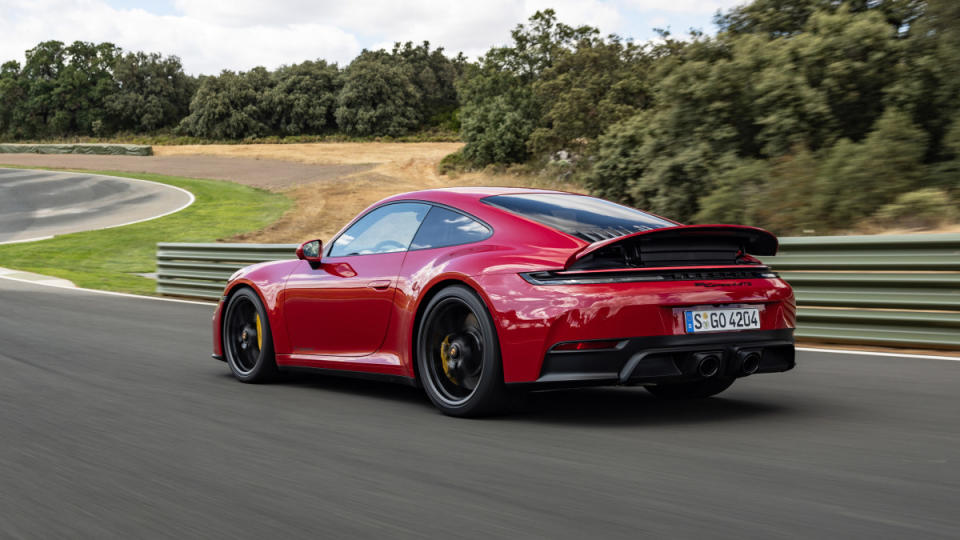
That one is a permanently excited synchronous electric motor integrated into a modified, now-standard eight-speed PDK dual-clutch transmission – it features reinforced clutches, gear sets, bevel-gear drive – that adds an extra 53 horsepower and 110 pound-feet of torque into the system. Similar to the turbo, the electric motor can add that same amount of power back into the battery by raising the load point on the engine. This occurs while during braking or coasting, but is not in fact regenerative braking. Yes, that means it's burning gasoline to charge the battery so it can then deploy that electric power when it's most-needed – we never said efficiency was the priority here. This unique arrangement is all on purpose, Porsche tells us, as 911 buyers want their cars to drive like a 911 always has, which means reliable and consistent brake feel is a must. All of these elements in the hybrid powertrain do their work covertly until you put the top down on a Cabriolet or Targa. Only then does the turbo’s devilishness reveal itself in the form of sound.
Again, unlike most turbocharged cars that solely rely on exhaust gases to keep the turbo spooled up, Porsche can keep the T-Hybrid turbo spinning with the electric motor. It doesn’t do this in every drive mode, but put the GTS in Sport Plus mode, and even when you lift and hop to the brake pedal, the turbo is kept spinning. It’s a quasi-anti-lag mode, and you can hear the fluttering and spool of the turbo in your right ear under braking, which is undeniably cool as hell. This simply means that when you step back into the throttle, it already feels like the engine is on boost, rocketing you away with naturally aspirated-like response.
You better be ready for the immediacy of the T-Hybrid’s power delivery, too. Having just stepped out of a 911 Dakar (it uses the original 992 GTS powertrain), the combination of instant electric torque and more system torque earlier – 368 pound-feet at just 1,500 rpm – is surprising. The first time we dug a little deeper into the throttle on corner exit while driving through switchback-like mountain roads, the test car stepped its rear end out, with far less effort than it takes to do so in non-hybrid 911s.
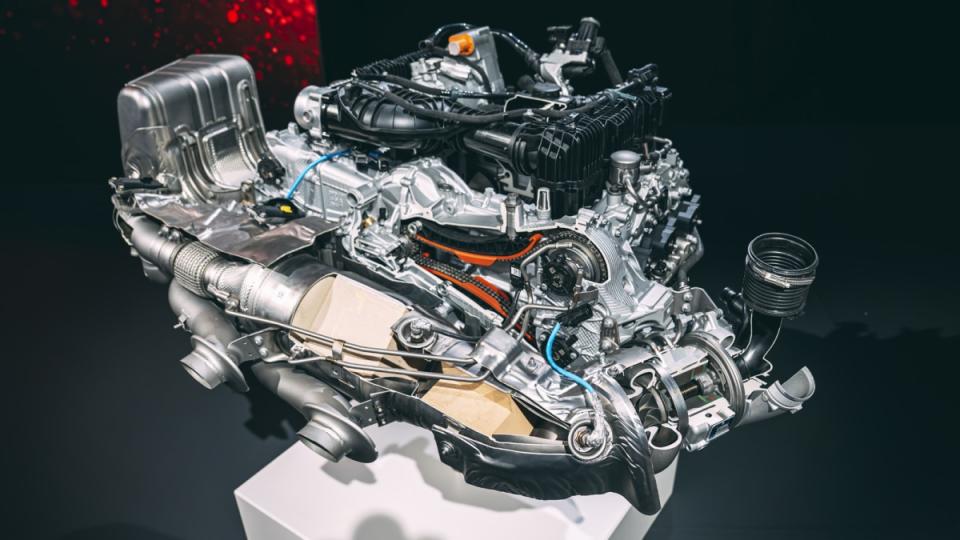
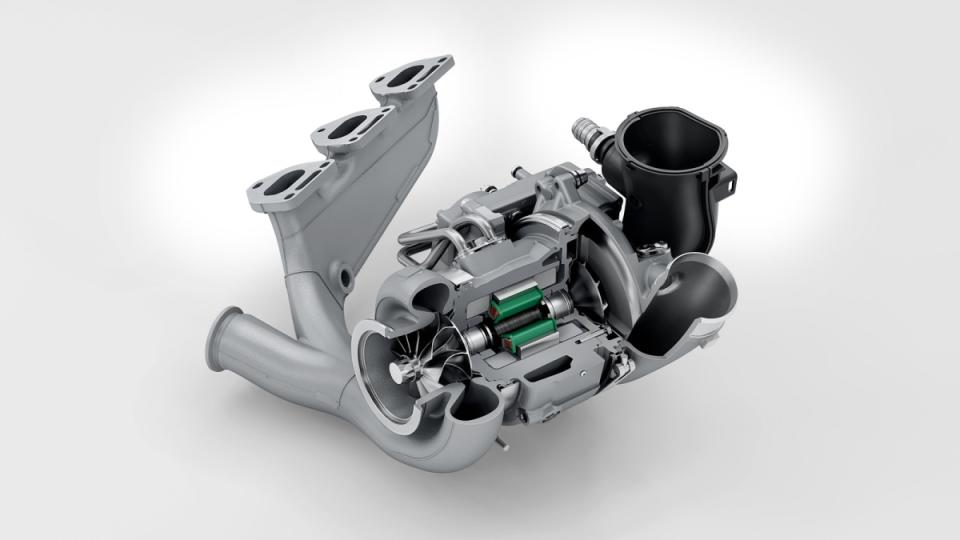
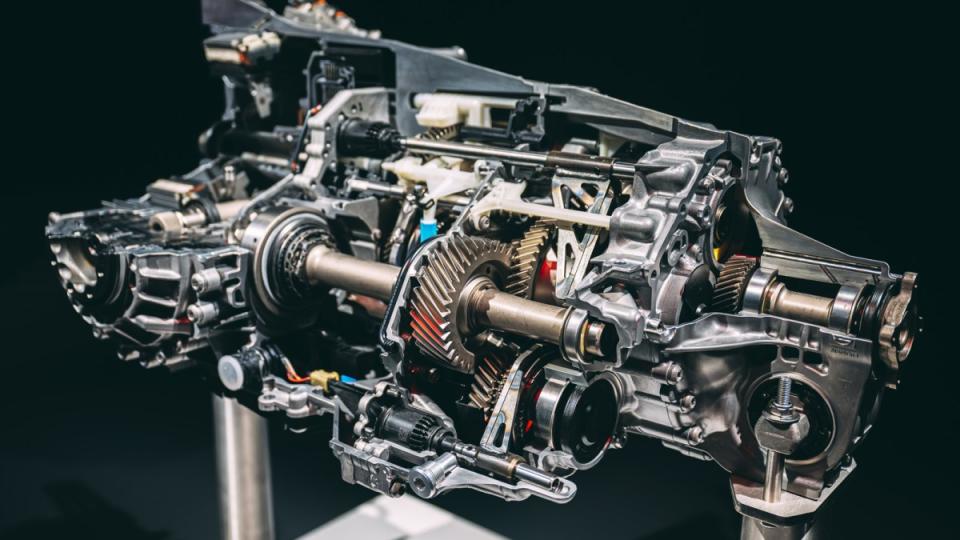
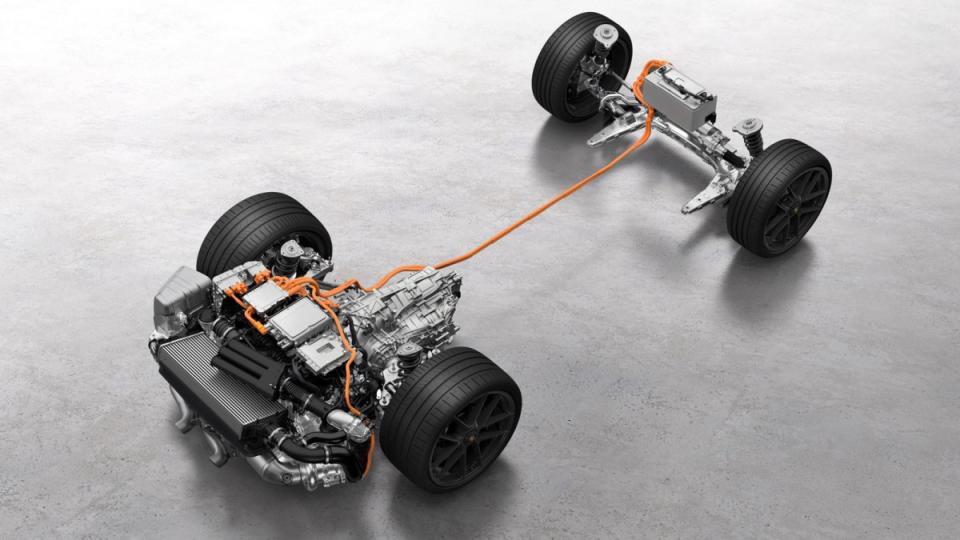
All of the above is a perfectly reasonable answer for when someone asks “Why hybridize the 911?” But Porsche has more succinct answers to such a question, too. For one, worldwide emissions standards are consistently creeping in. This new 3.6-liter flat-six meets those stringent standards by operating at the emissions-friendly air-fuel mixture of lambda 1. It might seem counterintuitive, but engineers tell us that a less stressed, larger engine is the solution it found to meet emissions standards. The engine itself features numerous efficiency improvements versus the previous 3.0-liter, as it adopts VarioCam technology and the solid roller cam followers Porsche uses in motorsport. The electric motor performs the function of the alternator, and the air conditioning compressor is powered electronically. Funnily, eliminating these accessory bits means the bigger 3.6-liter engine doesn’t take up as much space in the rear as the 3.0-liter it replaces, which is crucial, because that leaves room for the pulse inverter and DC-DC converter directly above the engine.
Enough with efficiencies, though, because even while the T-Hybrid is nicer to the environment, its total system output still bests the outgoing GTS with 532 horsepower and 449 pound-feet of torque combined, improvements of 59 and 29, respectively. Its 0-60 mph time dips by 0.3 second to only 2.9 seconds in the Coupe, and top speed is a blistering 194 mph. Most impressive of all, Porsche test development driver Jörg Bermeister chopped off 8.7 seconds around the Nürburgring Nordschleife with the new GTS, which speaks to improvements beyond just the hybrid system.
The ever-impressive Porsche Dynamic Chassis Control roll stabilization system is improved and now run off the high-voltage system of the hybrid. Ten-millimeter wider tires are fitted at the rear. Rear-axle steering is made standard on the GTS, and both the front and rear brakes are larger to cope with the extra power – the available carbon-ceramic 10-piston(!) fronts are specifically brought over from the 911 Turbo S.
Said extra power washes over you in one big monsoon of a shove forward. In comparison to the frenetic, high-energy 3.0-liter, this new T-Hybrid powertrain feels like it’s going for a leisurely walk in the park as it catapults you down the road so effortlessly. The smooth and wide torque band lets you worry less about what gear you’re in accelerating out of a corner, because even if you’re hanging out between 3,000-4,000 rpm, the GTS is going to flatten you into the seat instantly. And while it sounds like you’re still in the same flat-six family, this 3.6 doesn’t exhibit the same mechanical zing up the rev range as the 3.0-liter.
In case you were worried the hybrid bits would ruin the handling and on-road feel of the 911, rest assured that the GTS is only 103 pounds heavier than before, part of which is due to the rear seats turning from standard to optional on all 911 trims that offered them previously. They can be added back as a no-cost option. To say that Porsche is proud of this weight-saving feat would be an understatement, and its tremendous performance is made evident on Circuito Ascari.
The track is an especially revealing environment to show off the GTS’ more visually obvious new enhancement: vertical flaps in the lower air intake that actively open and close as needed. For example, the flaps will be wide open when pushing on the track, but closed under low load to optimize air resistance and efficiency. Adaptive front diffusers under the bumper work in tandem with the outwardly visible flaps, and when open, direct air through the duct and into the wheel arch to reduce lift and cool the brakes. There are even underbody flaps that activate in Wet mode to direct water away from the wheels, therefore keeping the brakes dry.
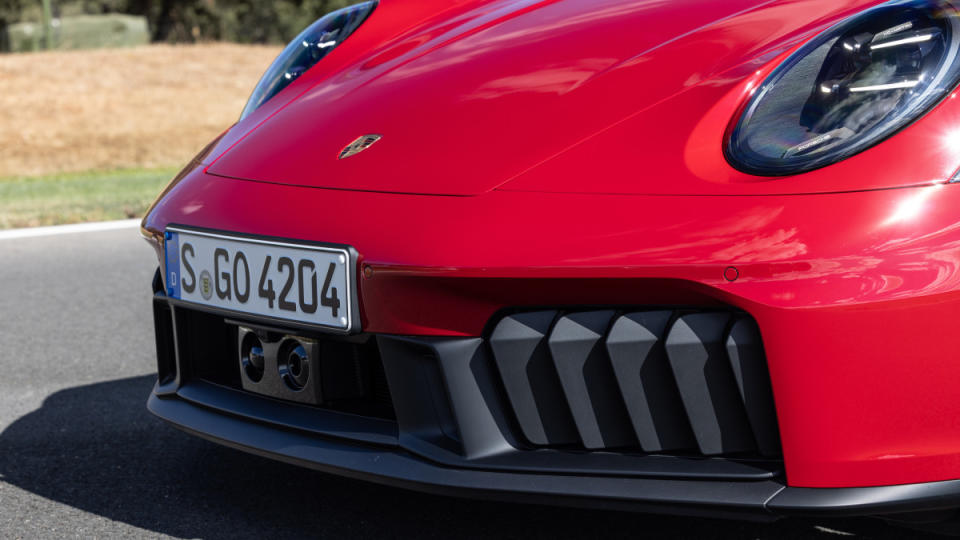
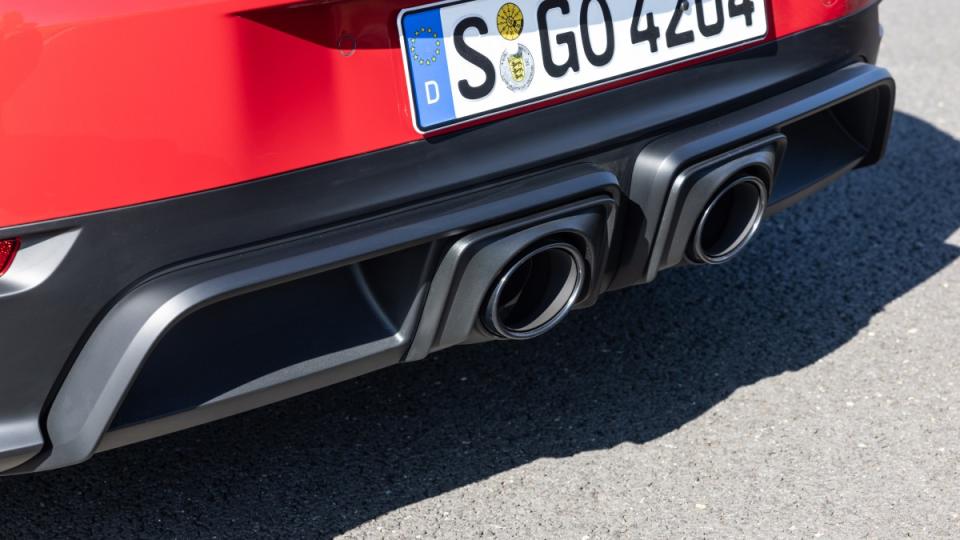
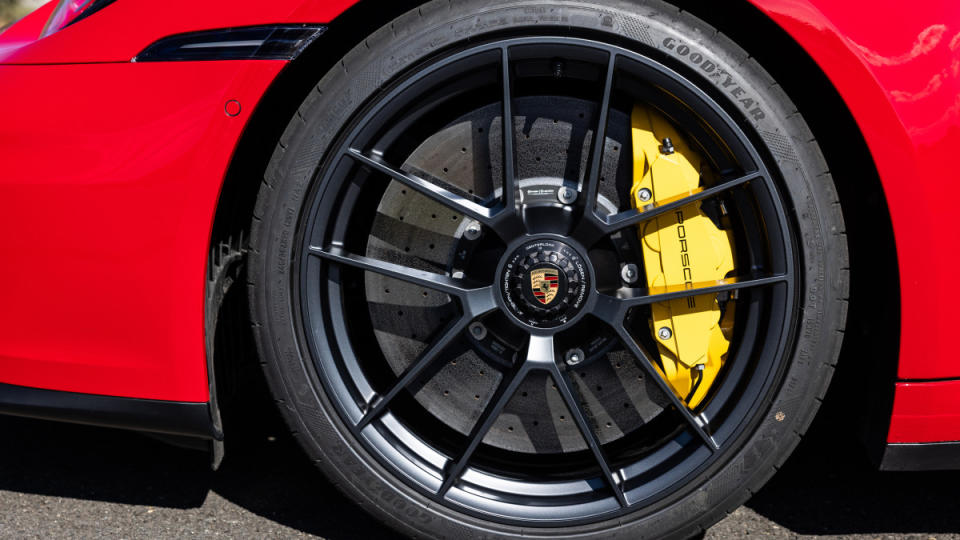
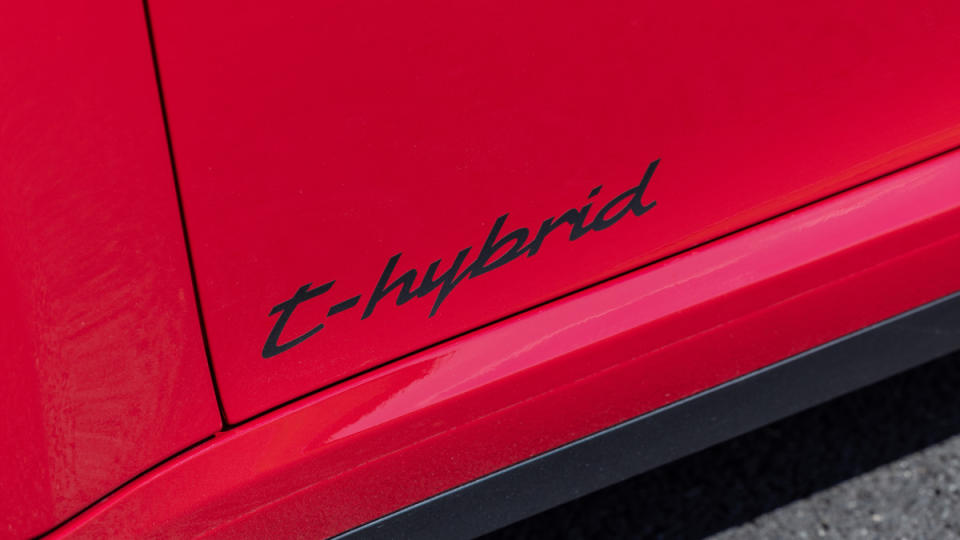
Like driving the T-Hybrid on the road, you don’t notice its hybrid elements on the track. Lap after lap, there’s no dip in performance from the hybrid system – the battery is liquid-cooled and engineered to last on track – and the power is simply relentless. Porsche walked us through certain scenarios on the track to show exactly how the hybrid system helps it go faster, explaining how energy from the eTurbo and electric motor is constantly being shuffled and doled out in the most effective ways. It’s frightening to think about the code and engineering that went into making this system work so seamlessly in the background. As an owner, you don’t need to give it a second thought – just stick it in Sport Plus, drive like you would any other track car and enjoy its massive performance. The wheel-filling brakes haul the GTS down to a stop with effortless grace and stability. And yes, its 3,536-pound curb weight can be felt in some of Ascari’s tighter corners, but the PDCC and rear-axle steering do a valiant job of keeping the 911 feeling light on its feet despite the weight gain.
As for the negatives, the best I can do is straight out of the “old man yells at cloud” book. Porsche took away the damn twist-to-start “key” to the left of the steering wheel and replaced it with a button (still to the left of the wheel). Boo! But also, this opens the door to remote start for the 911, which isn’t a feature we’ve been asking for, but could be a boon for folks who use the car as a daily driver. The other interior “upgrade” that feels a bit like a downgrade is Porsche tossing out its analog tachometer and replacing the cluster with a fully digital 12.6-inch curved screen. Sure, you can cycle through tons of different views now – including one with the redline at the 12 o’clock position as Porsche race cars have done – but not having a simple, analog tachometer right in the center of the dash in a 911 just seems wrong. But like every other “I can’t believe they did that” moment throughout 911 history, the world will get over it.
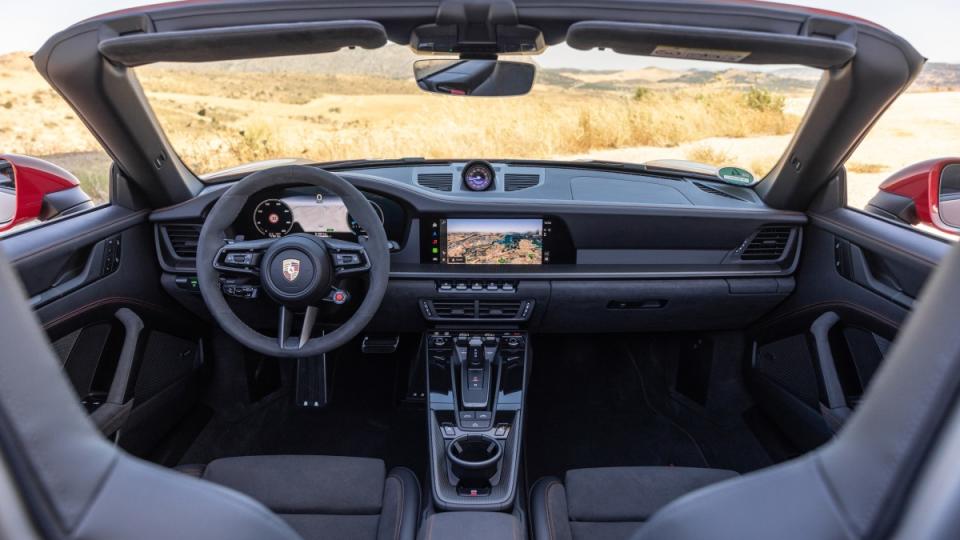
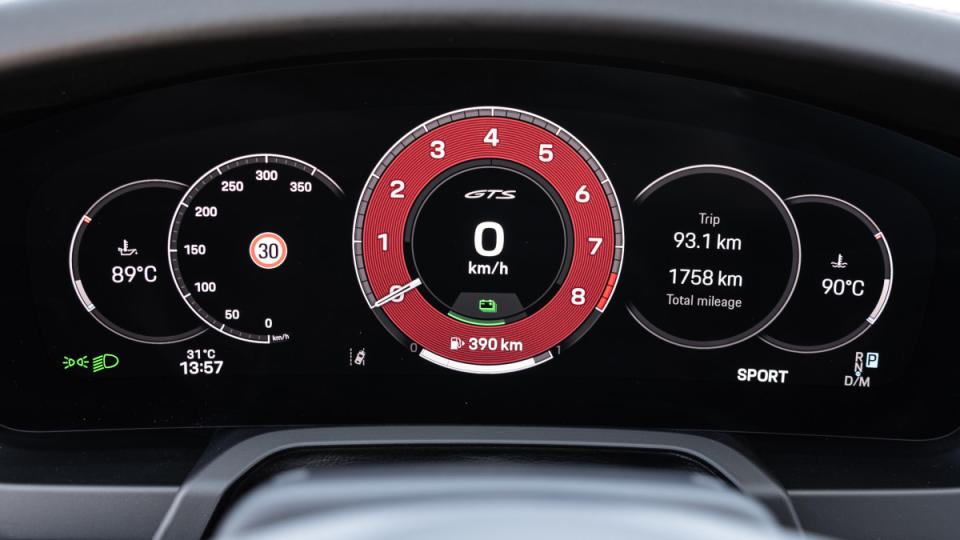
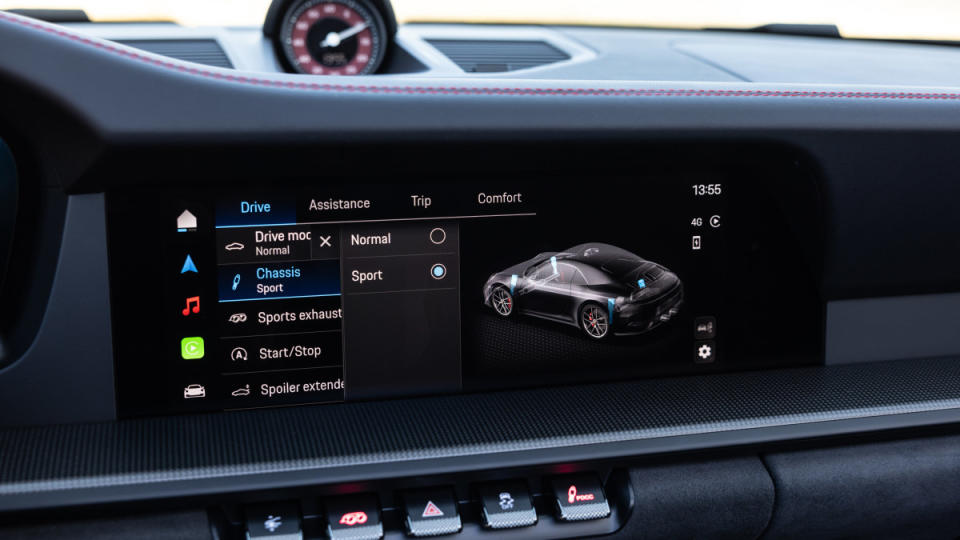
The rest of the new 911’s interior is largely the same outside of a much-improved infotainment system (now with an extensive hybrid monitoring view and tire temperature data), cooled wireless phone charging under the center armrest, air quality system and other small changes such as greater customization of the drive modes. Minor exterior enhancements such as grouping the turn indicators into the new Matrix (or optional and new HD Matrix) headlights really cleans up the front end. Then around back, a new bumper highlights the GTS’ new central-exit dual exhaust while moving the license plate further up the rear of the body.
None of the exterior or interior enhancements come close to the massive change that is the T-Hybrid powertrain, though. The GTS is the only 911 variant that will enjoy it for now, as Porsche tells us it wants to use this trim as “the lighthouse” to experiment with and as a way to look forward to future 911s. Mum is the word when it comes to where the hybrid might show up next, but you can trust this same setup won’t be implemented with a manual transmission since the electric motor can only be fitted with the new PDK. We’re told the seven-speed will survive in other, “enthusiast-oriented versions,” so perhaps a future Carrera T and GT3.
The new T-Hybrid version can be yours for the price of $166,895, or nearly $10,000 more than the ongoing GTS. It’s executed in such a way that even the staunchest of Porsche purists will find it difficult to turn their nose up at. At the same time, if you were hoping for a big departure in driving experience compared to a non-hybrid 911, you’re likely going to be left wondering why Porsche didn’t go further. Plenty of other 911 variants exist and will be hitting the stage in this 992.2 cycle, and we’ve already driven another in the base Carrera, so head to that first drive for even more about the latest 911.
Related video:
You Might Also Like

